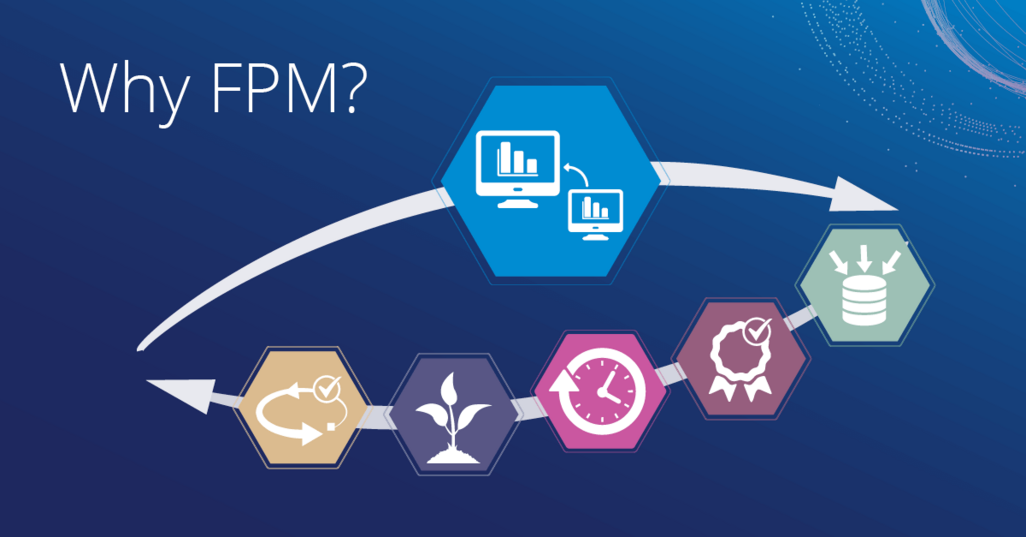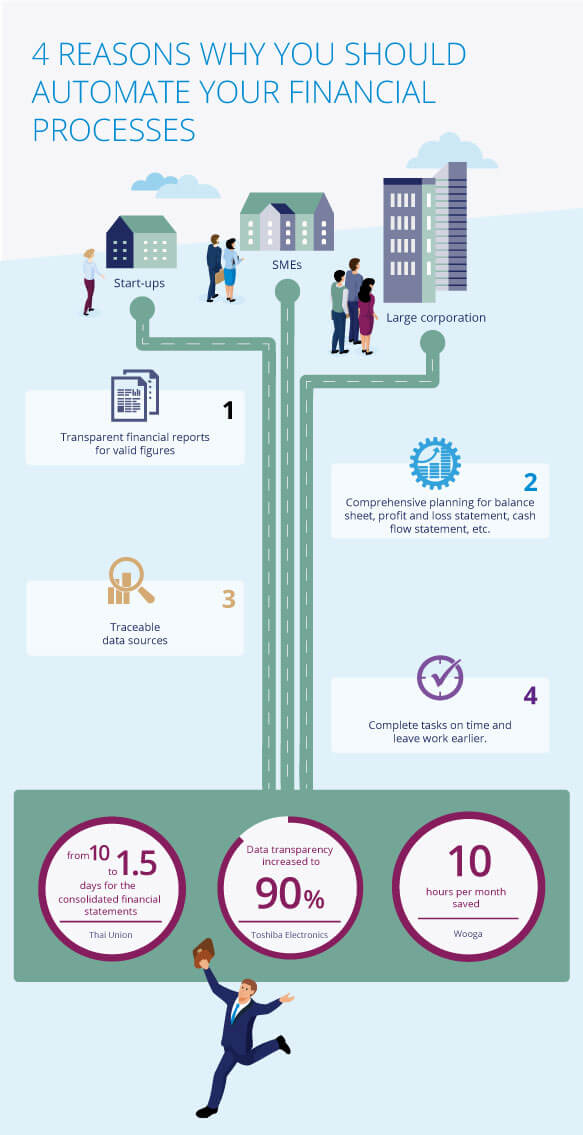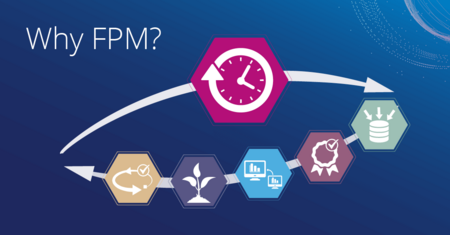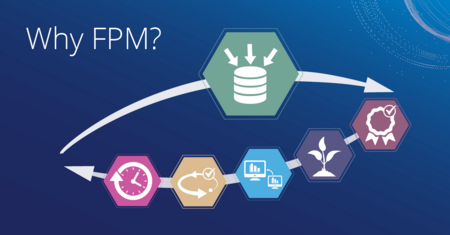4 reasons why you should integrate your financial processes – Why FPM (1/6)

Even for bigger companies, having integrated financial processes is still not the norm. It does not matter whether you work in a large corporation with specialized departments for invoicing, FP&A, group controlling, etc., or a small team of just two accountants handling all aspects of the financial processes and financial controlling. In both cases, the consolidation is prone to errors with Excel worksheets being passed around from one desk to another.
By using a Financial Performance Management (FPM) software, managing your organization’s financial processes is simplified. But what exactly are the advantages of an FPM software? And which challenges does it help to overcome?
In this post, we will highlight the top 4 reasons why you should start integrating your financial processes and how your team can get started. This post serves as the start of our ongoing blog series Why FPM?
The challenges of a disconnected financial process

This is a typical financial close process flowchart that we are all too familiar with. It all starts with an invoice that is read into a bookkeeping software, followed by transferring these invoices into numbers in an ERP system, subsequently setting up the trial balance and general ledgers, creating reports out of these numbers, and eventually trying to make sense of the financial data in the management review.
At this stage, anxiety kicks in for most finance teams. Finance professionals are asked questions such as “Where did this number come from?”, “How does it compare with our performance last year?”, “Could you explain the sudden increase/decrease in this section?”. This is the part where finance teams are put in the spotlight and left scrambling through multiple Excel files trying to answer these questions to the best of their abilities.
Most finance teams experience the severe consequences of non-integrated financial processes at this stage. With multiple ERP systems, versions of general ledgers, and inconsistent financial reports, it is difficult to finish financial review meetings in time.
Business insights are only as good as the data received. Hence, having accurate and reliable data is paramount for your business. And that is exactly what FPM solutions aim to solve. Through seamless integration of finance systems and processes, FPM software leapfrogs the preparation of financial statements and provides you with a platform to answer your management team’s burning questions.
What are the advantages of integrating your financial processes?
1. Report with full accuracy
When working manually, financial numbers are copied and pasted across multiple financial statements by multiple employees. Every time data is transferred, there is an opportunity for errors to occur. The challenges are exacerbated when multiple teams are working from different locations. However, with integration in place, finance teams can ensure that everyone is looking at and working on the same set of numbers. FPM solutions with integration capabilities are designed to pull data from the source and display faulty information during the financial due diligence process.
2. Comprehensive planning: from P&L to balance sheet and cash flow statements
In an ideal world, organizations would plan on all three financial statements – P&L, balance sheet, and cash flow – for a holistic view of the company’s long-term financial planning process. But this is far from the reality. Most companies focus on the P&L statement simply because the numbers are the most attainable through exported ERP data. Sadly, balance sheets and cash flow statements are often dreaded and neglected. Of course, we have seen businesses working with large Excel files with thousands of macros just to make it work, but we all know Excel will eventually reach its maximum capacity and eventually crash.
Fortunately, integration across these three statements is possible with FPM solutions. FPM solutions are able to assign relevant activities not only to the general ledger accounts, but also to the sub-ledgers, and to assign the respective transaction types. Based on the transactions, all three financial statements can be filled in automatically. Planning becomes a lot easier for finance teams as they have complete transparency of the financial data across all three statements. Moreover, circular references and missing links are no longer an issue with a sophisticated FPM software.
3. Gain transparency of data sources
A fully integrated system will also allow you to drill down to the transaction level and make sense of your numbers. By connecting your FPM software directly to your ERP solutions, you will be able to pull out invoices in real-time when needed. This helps answer your management’s burning questions such as “Where did this number come from?” as you now have detailed invoices as proof.
4. Submit reports and end work on time
The benefits of financial integration go beyond simply connecting systems. Integration also means spending less time on manually copying and pasting data, which saves a significant amount of time. If you are a group accountant, you may know the pain of waiting for multiple subsidiaries to submit their reporting packages, and the gruesome hours spent consolidating these reports together and finding tons of errors. With direct integration to their ERP system, you can autonomously retrieve information whenever needed. Say goodbye to sending Excel sheets back and forth as well as waiting countless hours for replies via e-mail.
The 4 reasons at a glance

How integrating financial processes helps our customer Thai Union
The Thai Union Group is an excellent case study of how the integration of financial processes has improved their finance management processes tremendously. As a multi-national seafood producer, Thai Union has over 65 reporting entities that need to be consolidated, with a total of 108 users having access to the database. With the help of the LucaNet FPM solution, they can fully integrate their close to disclose process, which has enabled their group accountants to cut down consolidation time from ten days to just 1.5 days.
Monthly reports are also generated in ten days, including consolidation, as compared to 25 days required with manual, disconnected financial processes in the past. Thus, Thai Union managed to cut down the time to generate financial reports by half a month. They can now submit their reports before the deadline and end work on time.
Accelerate your team’s performance by integrating your financial data
The integration of financial processes makes transferring all your financial data fast, simple, and automatic. With advanced ETL (extract-transform-load) technology to seamlessly connect all your ERP systems to a single source of truth, integration will adequately prepare your organization for current consolidation and reporting demands, as well as scale up your finance team for future growth. It is time to answer your management’s questions promptly and confidently by leveraging an intelligent FPM solution to improve the connectivity of your data sources.
In our next blog post of the series “Why FPM?”, we explain how an FPM software helps speed up your financial processes. Read more here:



